CIHT 2022: Croatia's Premier Health Tourism Conference Turns 10 in Style
November 2, 2022 - Kvarner cements its reputation as the de facto capital of the Croatian medical tourism story, as the Crikvenica International Health Tourism (CIHT) conference marks its 10th anniversary jubilee with yet another outstanding conference and list of participants.
There has been a lot of uncertainty in the world in the last decade, and tourism is no exception. But there is one corner of Croatian tourism, where things have remained fairly constant, growing every year and attracting global excellence from all corners of the planet.
It is 5 years since I discovered that Croatia even had a medical tourism industry of note, when Ognjen Bagatin introduced me to the excellent Zagreb trio of Poliklinika Bagatin, St Catherine's Specialty Hospital, and Svjetlost Eye Clinic, but while the Croatian capital had an impressive lineup of services, it did not take me long to realise that the centre of medical tourism excellence in Croatia lay on the coast in Kvarner, where a concentration of truly outstanding medical tourism experts - in a variety of fields, were offering some of the best - and most affordable medical tourism services in Europe, ably organised by the umbrella organisation, The Kvarner Health Tourism Cluster.

At the centre of those promotional efforts was a conference which started small back in 2013, went online during the pandemic, but last month celebrated its jubilee 10th anniversary firmly established as the leading health tourism conference in the region, with a truly outstanding list of international expert speakers. When I first attended the conference back in 2018, I was impressed by the number of medical tourism superstars with no obvious connection to Croatia who had made the journey to take part. These included Keith Pollard, Editor-in-Chief of the International Medical Travel Journal, and Sherine Azli, CEO of the Malaysia Healthcare Travel Council, voted the best medical tourism country in the world. Mayo Clinic, Cleveland Clinic and many other prestigious names have taken part over the years.
After the turbulence of the pandemic years, medical tourism in Croatia is back on track, largely due to the energy of the movers and shakers from Kvarner. An overview of this year's CIHT 2022 conference below. You can learn more about CIHT 2022 on the official website.
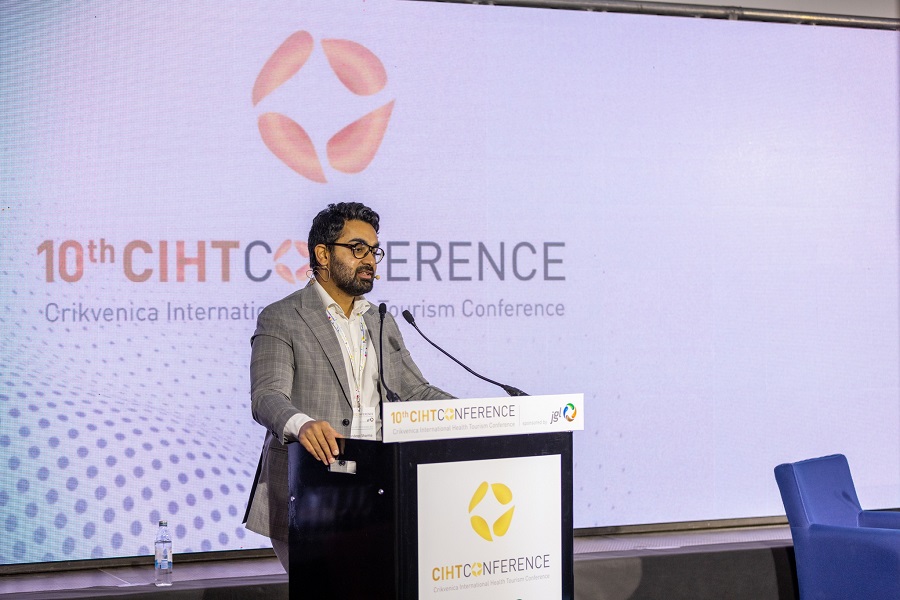
The jubilee 10th CIHT confirmed its reputation as a leading regional conference on health tourism
This year's jubilee 10th consecutive CIHT (Crikvenica International Health Tourism) conference, held on October 20 and 21 in a hybrid form, in Hotel Omorika and online, gathered in one place more than 20 lecturers from 7 countries and over 300 participants eager for new knowledge about the position, challenges, future and trends in health tourism. The growing attendance and interest in this conference speaks volumes about the importance of a strategic development plan for health tourism in order to better position Kvarner and Croatia on the map of health tourism destinations in the world.
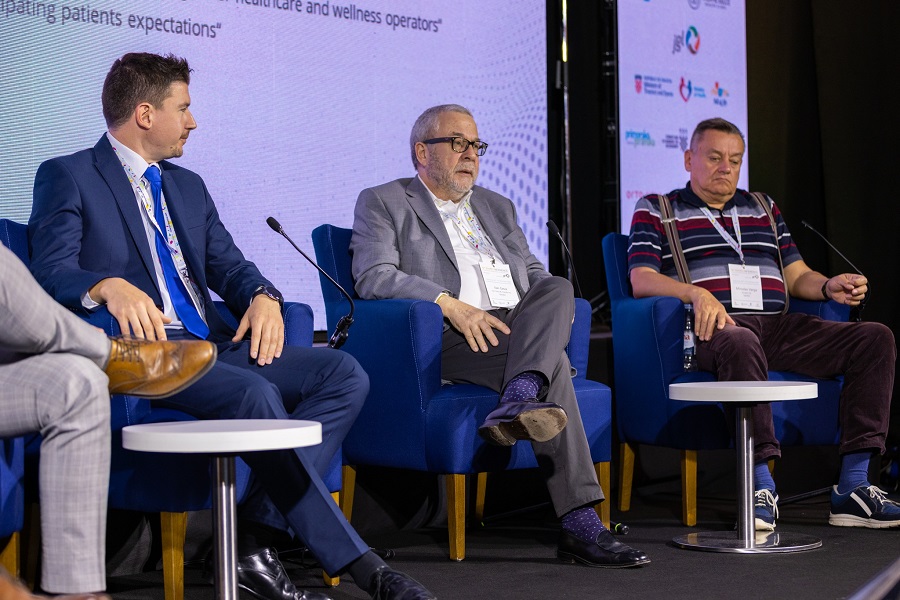
"The CIHT conference achieved its goal again this year - it gathered top experts from all over the world in the field of health tourism. About 120 participants gathered in Crikvenica live, and even more online. These two days were very interesting in terms of exchanging information, experiences and knowledge, and we will certainly all leave richer for some new knowledge that we will apply in practice. As for the future of the CIHT conference, we are already planning new ideas, speakers and topics, and I invite everyone to join us at the CIHT conference in 2023", said the director of the Tourist Board of the City of Crikvenica, Marijana Biondić.

One of the special features of this conference is that it brings experts from different professions such as medicine, tourism, marketing and business, which gives a diverse and comprehensive perspective on this prosperous branch of tourism. The conference ideally connects the experiences of the public and private sectors, experts and representatives of health institutions with practical experience. The covid period was challenging, especially for the health sector and its related sectors, therefore this year's conference was guided by the idea of providing answers to the questions of how to adapt to the changed needs of patients and how to recognize the potential of your destination and harmonize it with market requirements.
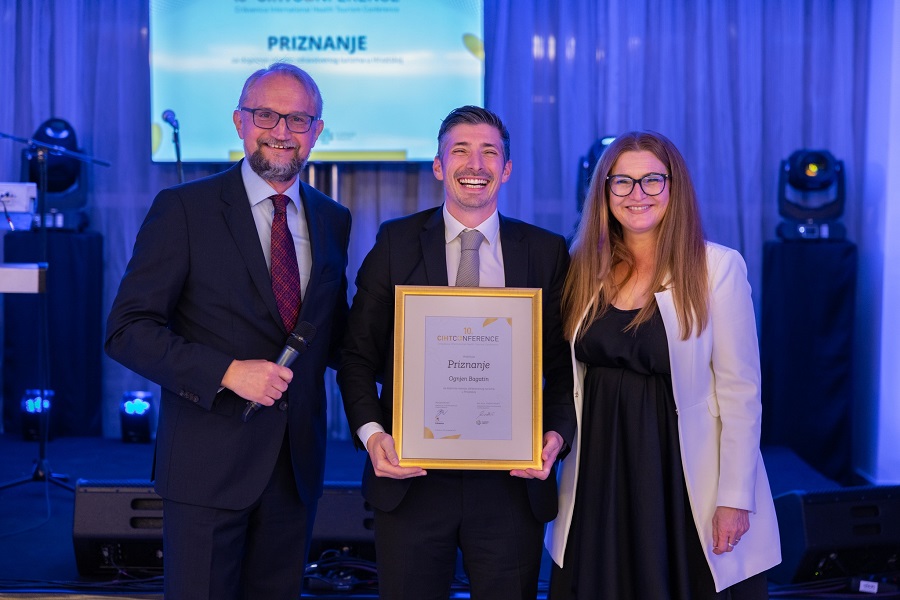
After the workshop, in honor of the 10th anniversary, an award ceremony was held last night for institutions and individuals who, through their successful activities, are responsible for the development of health tourism in Croatia. The following were awarded: Special Hospital Akromion, Special Hospital for Ophthalmology Svjetlost, Polyclinic Glavić, Special Hospital Krapinske Toplice, Special Hospital Stubičke Toplice, Special Hospital Sveta Katarina, Special Hospital for Orthopedics Dr. Nemec, Polyclinic Rident, Thalassotherapia Opatija, Terme Selce, Thalassotherapia Crikvenica, Ognjen Bagatin and Marcel Medak.

While yesterday the topics of trends in health tourism, investments and development of health tourism were in the center, today's presentations were aimed at identifying the market - who are the patients who use services in health tourism, how to improve the service to meet their needs, how to become an attractive institution and destination for new types of tourists and how to achieve competitiveness and break into new markets.
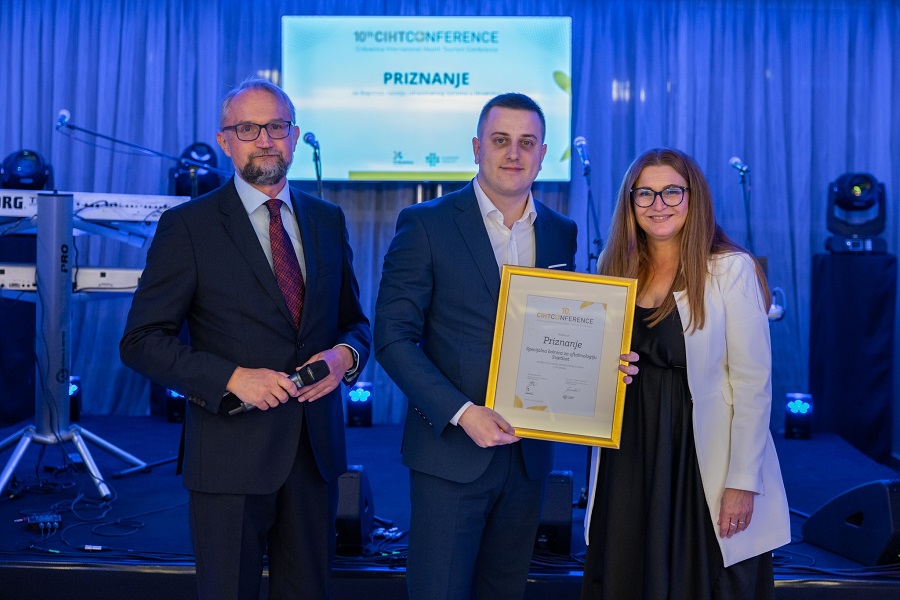
The successful edition of the 10th anniversary CIHT conference is the result of the cooperation of four organizations that put Kvarner on the map of world destinations for rest and rehabilitation: the Tourist Board of the City of Crikvenica and the Kvarner Health Tourism Cluster as organizers, and Thalassotherapy Crikvenica and Selce Thermal Spa as co-organizers.
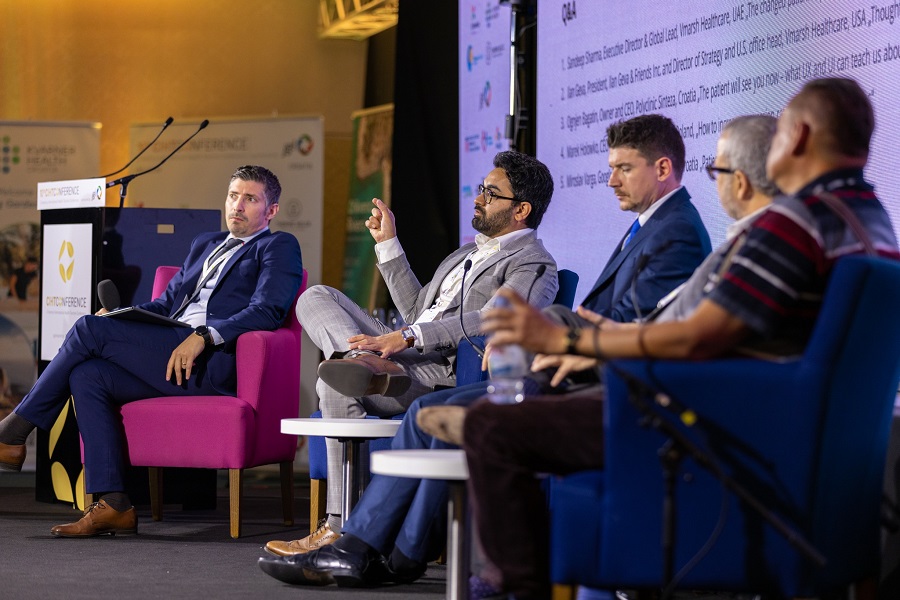
"I think that all participants, and we as organizers, are satisfied with this year's conference. There was a lot of exchange of experiences, agreements, specific joint work, and ideas for the next conference were also obtained with regard to the directions in which health tourism is moving - from the use of digitization, artificial intelligence, regional differences... We are already creating plans and topics for next year , and we also invited some of this year's lecturers to join us", said Assoc. Ph.D. Vladimir Mozetič, MD, president of the Kvarner Health Tourism Cluster.
The general sponsor of the 10th CIHT conference is Jadran-galenski laboratorij d.d., a Croatian pharmaceutical company with global success and recognition. The conference is supported by the Ministry of Tourism and Sports, whose support was crucial in the organization of this conference. The conference is also supported by: Ministry of Health, Primorje-Gorski Kotar County, Croatian Tourist Board, Kvarner Tourist Board, Croatian Chamber of Commerce and City of Crikvenica. Conference partners are Orto Nova - Dental Medicine Center, AmCham - American Chamber of Commerce in Croatia, Jadran d.d. and Ericsson Nikola Tesla d.d. Media sponsors are Jutarnji list and Lider.
After the worthy celebration of the 10th anniversary, preparations for the 11th edition of the conference will soon follow, again with top experts from respected world institutions, interesting discussions on current topics and numerous news.
For the latest news and features on medical tourism in Croatia, follow the dedicated TCN section.
Dubrovnik Winter Flights: 3 National, 3 International Destinations
November 3, 2022 - The new Dubrovnik winter flights timetable is out, reports Croatian Aviation, with improved international connections.
According to the published winter flight schedule 2022/2023, Dubrovnik should be connected to 3 international and 3 domestic destinations. Croatia Airlines and Trade Air should operate on domestic routes, and Vueling Airlines, Turkish Airlines and British Airways should operate on international routes.
During the entire winter flight schedule, Dubrovnik should be connected by daily flights to Zagreb with the flights of the domestic national carrier. Of course, via Croatia Airlines lines from Zagreb to other European and international destinations.
Among the foreign airlines in Dubrovnik this winter, we should see Vueling Airlines on the route to Barcelona, Turkish Airlines on the route to Istanbul, and British Airways on the route to Gatwick Airport in London. Lines to Barcelona, Istanbul and London (Gatwick) should enable Dubrovnik to have a direct connection with international destinations during the winter, so we hope that the mentioned lines and flights will actually come true.
You can view the entire schedule of the 2022/2023 winter flight schedule at Dubrovnik airport by clicking on this LINK. Of course, this schedule is subject to change, and it is quite certain that the airlines will adapt the flight schedule to their own assessments and needs, so subsequent changes and cancellations should not surprise us too much.
Certainly, we want Dubrovnik airport, just like our other airports, to have as many winter lines and flights as possible!
For the latest flight news to Croatia, check out the dedicated TCN flights section.
****
What is it like to live in Croatia? An expat for 20 years, you can follow my series, 20 Ways Croatia Changed Me in 20 Years, starting at the beginning - Business and Dalmatia.
Follow Paul Bradbury on LinkedIn.
Croatia, a Survival Kit for Foreigners is now available on Amazon in paperback and on Kindle.

Air Serbia to Offer Limited Winter Flights to Pula
November 3, 2022 - Looking for a festive visit to Istria? A new Air Serbia service is offering flights to Pula over the Christmas period.
The weather in Croatia these last few days has been exceptional, with people still swimming in the Adriatic. It coincides with the period when most flights to the coast stop for the season, businesses close, and the long winter begins.
Before the Homeland War, there used to be year-round flights to Croatia's Adriatic airports (read more in this fascinating interview with a 1980s tour rep - Croatian Winter Tourism in 1990: Full of Life! Tour Rep Interview).
Initiatives such as the Split Winter Tourism Roundtable have put the issue back on the agenda, and KLM is running 12-month flights from Amsterdam several times a week to Split, a great option for those wanting to connect with the Dalmatian coast out of season, but there has been little promotion of the fact.
And, as ExYuAviation writes:
Air Serbia has scheduled a limited winter service between Belgrade and Pula during the holiday period. Flights will operate between December 23 and January 9 each Monday, Wednesday and Friday with the ATR72 turboprop aircraft. Tickets are available for purchase through the airline's website.
Unlike Croatia Airlines, Air Serbia has a global network, including New York, which will allow both tourists and diaspora to visit Istria over the holiday period.
Great news, and one more connection to the Croatian coast out of season which will breathe a little more life into the Adriatic lifestyle during the winter months.
For the latest flight news to Croatia, check out the dedicated TCN section.
****
What is it like to live in Croatia? An expat for 20 years, you can follow my series, 20 Ways Croatia Changed Me in 20 Years, starting at the beginning - Business and Dalmatia.
Follow Paul Bradbury on LinkedIn.
Croatia, a Survival Kit for Foreigners is now available on Amazon in paperback and on Kindle.

Croatia to Test First Graders for Familial Hypercholesterolemia
November 1, 2022 - Starting next school year, screening first graders for familial hypercholesterolemia will be introduced, and Croatia will be among the first countries with such screening, which exposes the increased cardiovascular risk for children, as well as their closest relatives.
As reported by Index, the president of the Croatian Cardiology Society, explained: "One more test will be added to the systematic examination for enrollment in the first grade of primary school, and that is the total value of cholesterol in the blood." Hereditary, so-called familial hypercholesterolemia implies exposure to pathologically high concentrations of atherogenic cholesterol from early childhood. Therefore patients with this metabolic disease have a tenfold more significant risk of premature cardiovascular incidents.
20,000 people affected
It is estimated that around twenty thousand people in Croatia suffer from such a disorder of fat metabolism, and only one percent of them are recognised. Screening of children was supposed to start this school year, but due to technical reasons, it was postponed until the next school year.
If elevated cholesterol is found, the child will be referred to a pediatrician, and therapy will begin if the diagnosis is confirmed. Treatment is most effective if it starts as early as possible so that patients can have the same number of healthy years and life expectancy as those without the disease.
People suffering from untreated hereditary hypercholesterolemia often suffer from a heart attack or stroke between the ages of 35 and 45 and therefore live significantly shorter lives than the average population.
This concerns patients with the so-called heterozygous form of the disease, which occurs in about 1:300 people. A much rarer and much more malignant is the so-called homozygous hypercholesterolemia, in which, without treatment, patients fall ill and die as a result of atherosclerosis as early as adolescence. When a diagnosis is made during the systematic examination of a preschool child, the school medicine doctor will inform the family doctor about it. They will then perform the so-called reverse cascade screening, i.e., investigate the existence of familial hypercholesterolemia in the affected child's parents, brothers, sisters, or closest relatives.
A parent is a transmitter
Such screening can save the child's parents, one of whom is undoubtedly a carrier of this disease and at the same time suffers from, most often unrecognised, familial hypercholesterolemia. Detecting and treating sick parents and other close relatives, treatment will begin and thus prevent or delay the most dangerous complications of advanced atherosclerosis.
Miličić points out that this is a very important national project that will improve the cardiovascular health of many families and save many lives in the foreseeable future. Given that an average of 30,000 children are enrolled in the first grade of primary school, it is expected that a hundred children in one generation could be diagnosed with this disorder.
Miličić announced the introduction of the new screening at last week's symposium in Zagreb, organised by the World Federation of Cardiology and the Croatian Society of Cardiology. The seminar gathered leading domestic cardiologists who, just after the world premiere, got acquainted with the new procedure for controlling elevated cholesterol.
Other important topics were also touched upon, such as reducing the intake of table salt, the obesity pandemic, and diabetes. It was pointed out that Croats are currently the fattest European nation, and obesity represents a significant independent risk for cardiovascular diseases and many others.
Miličić asserted that Croatia, with a share of cardiovascular mortality of 37 percent in total mortality, with more than 22,000 deaths from these diseases per year, still belongs to countries with a high cardiovascular risk in Europe.
For more, make sure to check out our dedicated Lifestyle section.
Croatian Winter Traffic Rules for Lights in Force from Today, Tyres Soon
November 1, 2022 - From today, November 1, drivers will need to have daytime running lights or low beam lights on their vehicles during the day to be more visible in traffic.
As Poslovni writes, until 2018, the beginning of the mandatory use of lights on vehicles during the day would follow daylight saving, which was changed from summer to winter this Sunday, but with the amendment of the Road Traffic Safety Act, the date of this obligation was determined to be from November 1 to March 31.
The obligation for drivers to always have their daytime running lights or low beam headlights on during the day is prescribed for greater caution on the roads, that is, for better visibility. Drivers of mopeds and motorcycles must have their low beam headlights on during the day all year round or face a fine of HRK 300.
Cyclists must have one white light on the front, and one red light on the back of their bicycle from the first dusk to full dawn and in case of reduced visibility, or they will be fined HRK 500.
Mandatory winter equipment from November 15
From November 15 - on roads in winter conditions, when the road is covered with snow or ice on it - winter vehicle equipment will be mandatory, and this obligation will be in force until April 15.
During the winter conditions on the roads, motor vehicles with no prescribed winter equipment and trucks with a trailer are prohibited. Before entering traffic, drivers must clean frozen windshields and snow, ice or water on the vehicle.
For vehicles that do not have the prescribed winter equipment, a fine of HRK 5,000 to HRK 15,000 is prescribed for legal or natural persons. For the same offense, a responsible person in a legal entity, state authority, or local or regional self-government unit will be fined from HRK 1,500 to HRK 5,000. The driver will be fined HRK 1,000 for this violation. The police will order drivers whose vehicles do not have winter equipment to immediately stop driving or to continue driving on the road where it is allowed or to use winter equipment.
For more, make sure to check out our dedicated Lifestyle section.
Foreigners to be Able to Buy Agricultural Land in Croatia, Talking Price
November 1, 2022 - Real estate expert Sanjin Rastovac spoke on the show Točka na tjedan about buying agricultural land in Croatia, commenting on the current situation, foreigners' buying rights, and the prices.
As N1 writes, until now, foreigners could only buy land if they opened a company in Croatia, and from July 1 of next year, they will be able to buy without restrictions.
He added that it would be much simpler and everything will become easier after officially entering Schengen Area.
"There is interest from foreigners, mostly from larger corporations. On the other hand, it is not profitable for local people to have a small amount of land and cultivate it without subsidies", said real estate expert Rastovac.
He pointed out there will be great interest in solar energy, especially in Zagora and Slavonia, because of agriculture and farming.
He points out that Croatia is still the cheapest in the EU regarding land prices, at around 3,400 euros per hectare of arable land. While, for example, in Slovenia, the average is 20,000, and the most expensive is the Netherlands with 70,000 euros. "We can expect a lot of foreigners," he concluded.
When asked if there will be a selling of the ancestral property, he said that it has already happened more or less, especially in Slavonia, and he believes that it could increase.
"The euro is coming, and we are entering Schengen, so it will be easier for people to come. "Istria is the area of greatest interest because land there is the cheapest, and so is the Primorje-Gorski Kotar County," said Rastovac.
There is a lot of interest, he added, in the continent as well, and it is likely to grow. He also commented on the real estate market and the impact of interest rates.
"When interest rates rise, a lot more money is needed, so it is to be expected that there will be fewer buyers. Real estate is our favorite means of investment, but with the new increase in interest rates, we are entering a new cycle," Sanjin Rastovac finished.
For more, make sure to check out our dedicated Lifestyle section.
AWFT22 Reflections for Croatia: City of Nimes, Sustainable for 2000 Years
November 1, 2022 - The second edition of the first world forum dedicated to the transformation of the tourism industry, A World For Travel, was held in Nimes, France, from 27 to 28 October. TCN was there to learn about sustainability in travel and tourism. From a journalist's perspective, there was plenty of talk that seemed unactionable or unaccessible to the everyday person. Still, the forum did achieve its primary goal and made us think about the threats that the industry is facing and the fact that there is an urgent need for a change of direction. As for Croatia, there were no representatives, but the hope is that next year's forum will bring a lot more for this tourist destination where the question of sustainability remains very important.
In TCN, we had a chance to sit with the organisers, the representatives of Bosnia and Herzegovina, Ukraine, large and small businesses that focus on sustainable travel, and other media professionals who have worked on covering this vital topic. Our interviews and reflections are coming in the following days, all with the underlying thought of how Croatia is doing and where we are headed. Before we get to that, let us share what we learned from the city of Nimes.
Nimes was chosen for several reasons: its privileged location on the Rhone Valley-Italy-Spain axis with three direct motorway exits, 2 TGV stations with connections to Paris and Roissy airport, and to the main cities and their airports, not forgetting access to the TER network.
This ancient city is where history has left its mark for 2,000 years, as evidenced by the three main monuments: the amphitheatre, the Maison Carrée, and the Tour Magne, buildings that are today among the best preserved in the world. The vast restoration project of the Nimes amphitheatre, undoubtedly the largest undertaken in France at the beginning of the 21st century, demonstrates the common will to fully assume the heritage that is the pride of the City of Nimes, to preserve it and to transmit it. This restoration concerns the entire monument and is the most important one it has undergone since its origin. It is being carried out without interrupting the public's use of the site and its use for the many shows it hosts, as it has retained its primary function as a performance venue. This project follows the equally exceptional restoration of the Maison Carrée, which took place from 2006 to 2010. This monument represents one of the oldest and best-preserved expressions of a Roman temple dedicated to imperial worship. Its remarkable architectural quality also bears witness to the values of lasting peace, harmony and prosperity that the Roman Empire promoted and sought to guarantee in the first century AD.
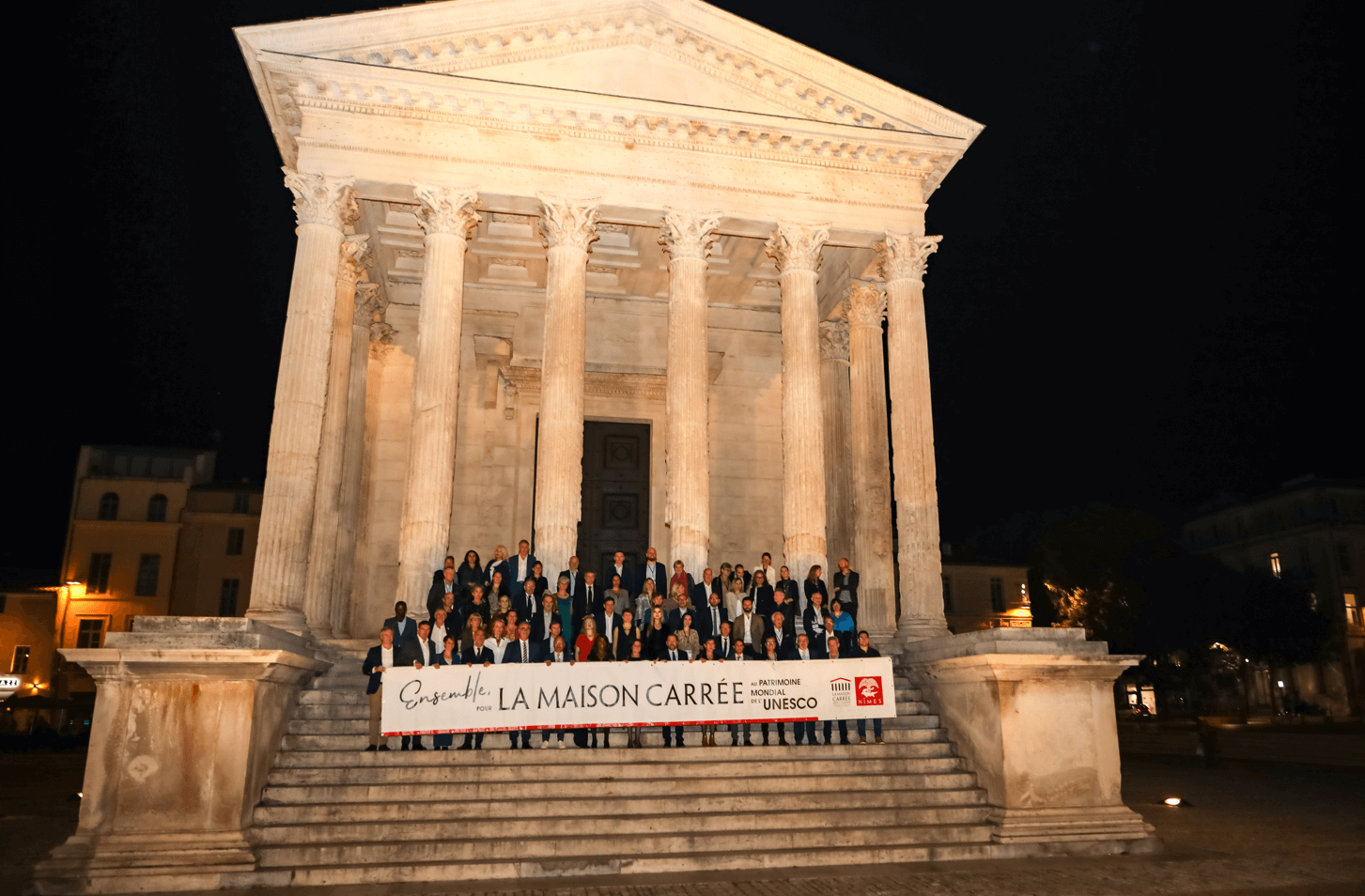
These restoration projects are all the more exceptional because the stones used are still extracted today from the same quarries used by the Romans 2,000 years ago. Did you say sustainable? The unique character of the ancient temple has motivated the city to apply for World Heritage status, an application that will be studied at the next UNESCO session. The protection of its ancient heritage, but also its enhancement, has been the backbone of the numerous urban redevelopment projects that have taken place over the last few decades.
In a constant concern to embellish and improve the living environment of the inhabitants and to make the city accessible to as many people as possible, many improvements have been made to facilitate the use of the city on foot and the organisation of events in the historic centre, not forgetting the connection with the transport network. The principle of intermodality prevails in the urban regeneration programmes and is reflected in the creation of high service level bus lines connected to park-and-ride facilities at the city entrances. A bicycle plan completes the package and is being developed in connection with the cycle paths and European routes that cross the territory.
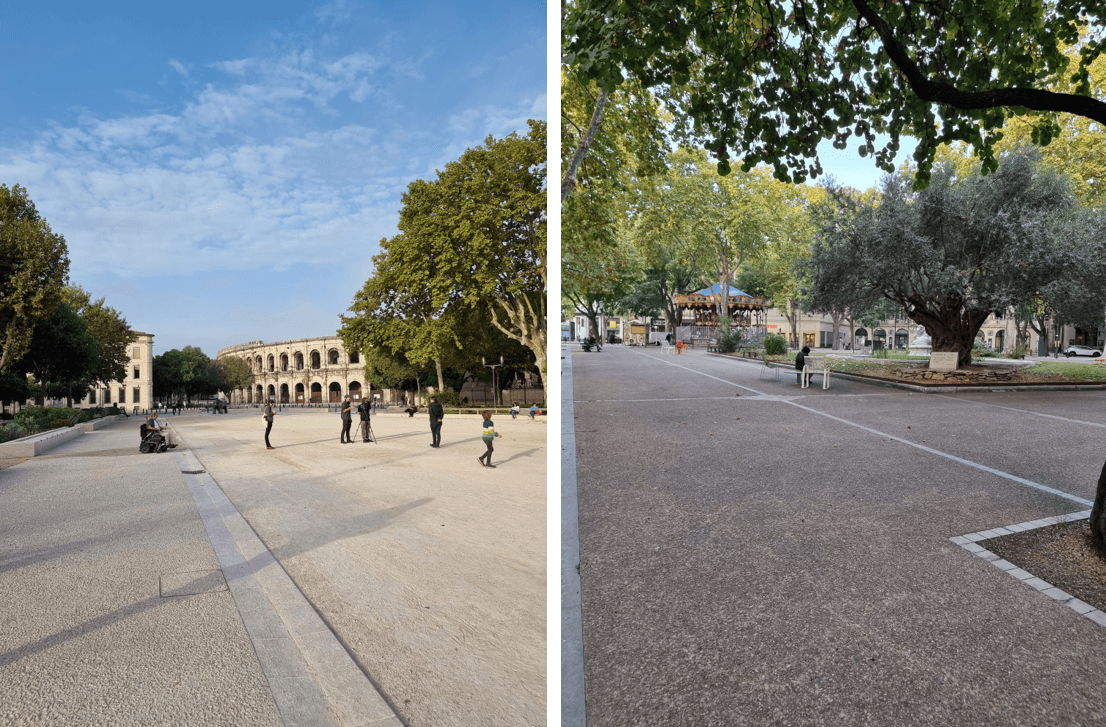
Improving the living environment and protecting the inhabitants from the vagaries of nature are priorities for the City, which has developed particularly innovative monitoring and warning tools, of which it was a pioneer. For more than thirty years, the City has been developing a substantial system to protect itself from climatic hazards and to preserve human lives as well as everything that contributes to economic development, including infrastructure. Residents, businesses, local media... all share the culture of risk and the imperative need to respect the measures provided for in the event of a crisis, in the interest of all.
Among the tools at its disposal, Nîmes has adopted a local town planning plan. While it restricts certain constructions and limits urban sprawl, it also guarantees the optimisation of buildable areas by rebuilding the city on itself. The development of numerous gardens and natural spaces, which are essential to avoid rainwater runoff, offer year-round peaceful and recreational spaces to a population that appreciates the conviviality of a human-sized territory. Designed for its inhabitants, these facilities are just as beneficial to the many visitors that Nîmes welcomes throughout the year to discover its heritage or to take part in a cultural or sporting event, or even one of the unmissable events that take place in the Roman city, such as the Emperor's Games, which take its visitors back to antiquity.
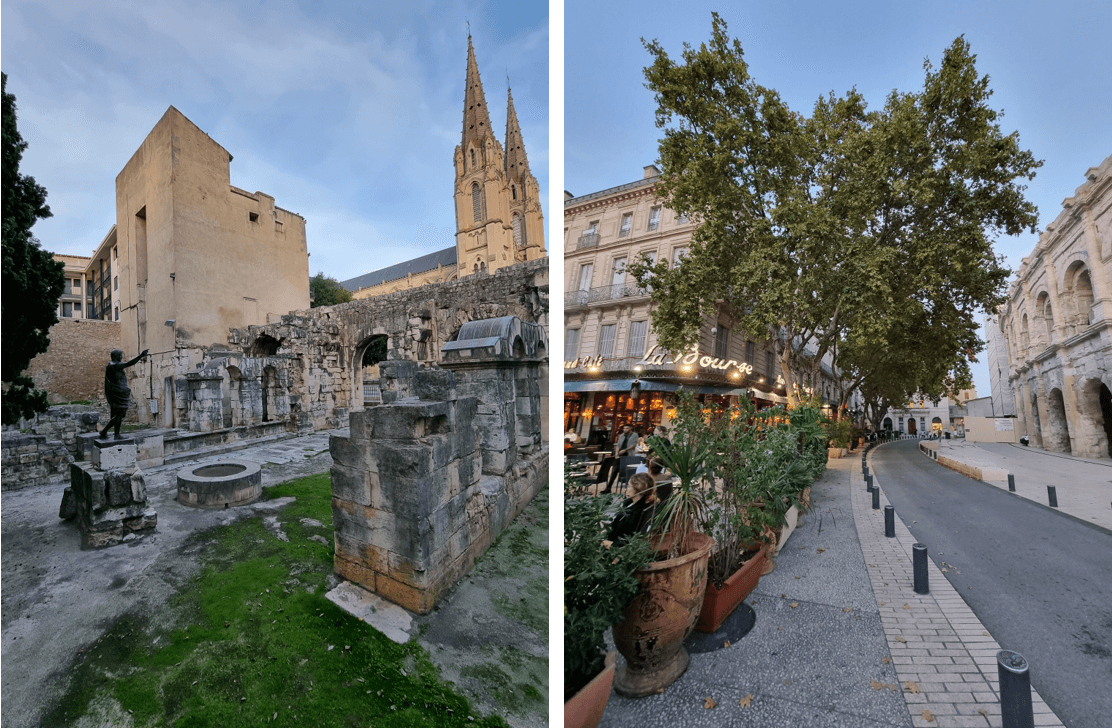
Nimes offers a calendar of events throughout the year in order to provide 4-season tourism and thus spread visitor numbers over the year. Ranked as the 8th greenest city in France according to the Green Cities Observatory and oxygenated by 372 ha of public spaces and 1,080 ha of natural spaces, it has been awarded 4 flowers in the Villes et Villages fleuris (Cities and Villages in Bloom) label and practices ecological management of its green and natural spaces, which is totally in line with the principles of sustainable development.
The city is committed to a sustainable approach with the implementation of global energy performance contracts, particularly in its museums, reducing its expenditure by more than 20% by 2021. It is also stepping up the development of its photovoltaic park and is continuing its work to obtain certification (Eco Réseau label, Sustainable Buildings Occitanie, etc.) to reduce energy consumption. The plan is to reduce the energy consumption of all its buildings of more than 1,000 m² by 40% by 2030 to comply with the requirements of the RTRénovation and RE2020 regulations.
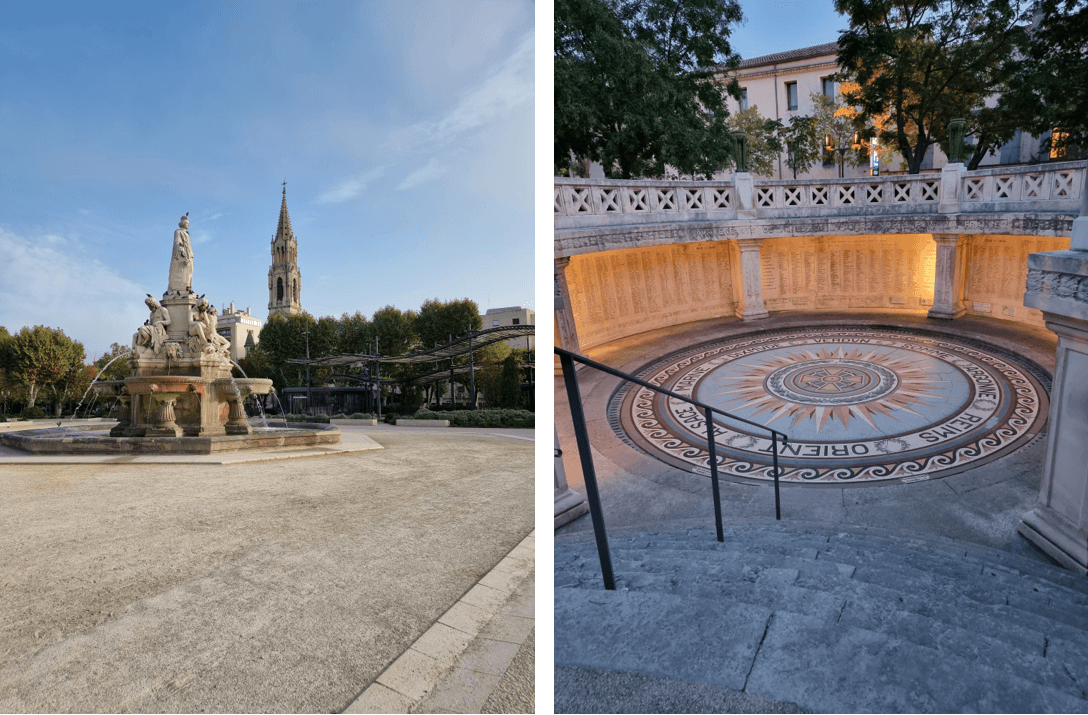
Nimes Tourism, in its capacity as a Destination Management Organisation, is accompanying the destination's professionals in a classification and labeling process, in collaboration with the CRTL Occitanie, which has placed this theme in its strategy. Already holding several labels, it is also committed to the ISO 20121 approach to strengthen its actions in terms of sustainable tourism.
In conclusion, while the participation of Nimes in the A World for Travel forum was definitely an excellent marketing move by the town's officials, it wasn't empty promises. The city of Nimes is a truly fascinating little place, where you can feel the effort that has been put into making it a sustainable destination. Lots for Croatia to learn, definitely. And Nimes is not the only place that can teach us something. Next up in our AWFT series: what our neighbours have been up to.
For more, make sure to check out our dedicated Travel section.
Koncar's Revenue 26.4% Higher Than 2021's in Third Quarter of 2022
November the 1st, 2022 - Many Croatian companies have finally managed to get their revenues back up to reasonable levels in the post-pandemic period, only to have inflationary pressures and spiralling costs cause yet another issue. Koncar, however, has recorded a firm increase when compared to 2021.
As Mladen Miletic/Poslovni Dnevnik writes, in the third quarter of 2022, Koncar, the largest Croatian exporter and regional leader in the country's power industry, achieved an impressive increase in revenue from the sale of its products and services by 635.9 million kuna, which represents a 26.4% increase in comparison to the results recorded back during same period in what was for this company, a record-breaking 2021.
As much as 61.1% of Koncar's overall income was generated on foreign markets, and at the same time, the growth of newly contracted business and orders was also recorded, which inspires optimism for the future. Along with excellent results in the commercial part of the business, good financial results were also achieved, whereby the consolidated net profit of Koncar's companies amounted to 277.3 million kuna which is equal to 123.9 million kuna or an 80.7 percent increase compared to the same period last year.
With the inclusion of Dalekovod, sales revenues increased by 524.3 million kuna and amounted to 3.562 billion kuna in total. Here on the domestic market, Koncar's companies achieved revenues in the amount of 1.184 billion kuna, which is 268.1 million kuna or 29.3% more than back during the same period last year.
When it comes to exports successfully realised by Koncar, the most significant results were achieved on the demanding German market (332.7 million kuna), which is 40 million kuna more than last year. Sweden (238.8 million) and Austria (95.7 million) follow. Exports to the European Union (EU/single) market as a whole also increased and now amount to 1.343 billion kuna, representing 72.1% of this company's total exports.
For more on Croatian companies, ideas and entrepreneurs, make sure to check out our dedicated business section.
Valamar's Revenue Growth and Good Results Threatened by Inflation
November the 1st, 2022 - The Croatian company Valamar has enjoyed some excellent results and impressive revenue growth, but could all that end up being threatened by inflationary pressures? It seems rising costs are already making a dint.
As Poslovni Dnevnik writes, according to Valamar's business report for the first nine months of 2022, this huge Croatian tourism company achieved results that confirm the recovery of business operations after two years dominated by the public health crisis, and they also indicate the significant impact of the new crisis on business costs.
2.32 billion kuna in operating income was successfully achieved by Valamar, which was an increase of 14% when compared to the pre-pandemic 2019, primarily as a result of an increase in average prices of 19.5%. Operating profit (EBITDA) during the first 9 months of this year reached 943 million kuna, representing growth of 7.7%. The highest growth was achieved by premium hotels and campsites, which confirmed the justification of Valamar's previous investments in tourism with high added value. Northern destinations have also been recording higher demand and faster recovery than southern Croatia has, although hotels down south in Dubrovnik also reached the level of traffic they enjoyed back in 2019 during the main summer season.
Operating costs for the first nine months of 2022 grew by 19% compared to 2019 due to the significant increase in energy costs and the growth of other operating costs under the influence of spiralling and ongoing inflation. Electricity costs increased by a massive 89 million kuna, while other costs increased by a total of 126 million kuna when compared to back in 2019. The biggest impact on the increase in costs has been a staggering three-fold increase in the price of electricity to 230 euros per MWh, due to which, the work of many larger accommodation facilities during the off-season has been shortened.
"With revenue growth of 14% compared to 2019, Valamar Riviera has achieved full recovery from the crisis caused by the coronavirus pandemic. Through the increase in service prices, primarily the price of accommodation in the premium segment, we managed to amortise the enormous increase in energy costs and the increase we've seen with other operating costs.
Ahead of us is a year full of a lot of uncertainty and challenges owing to the energy crisis, inflation, the cost of financing and geopolitical disturbances, but there's also good news such as Croatia's impending entry into both the Eurozone and into Schengen. The country's tourism sector should turn to the preparation of the next tourist season as soon as possible in order to ensure competitive business conditions and sustainable growth of tourism in time,'' said Zeljko Kukurin, President of the Management Board of Valamar Riviera.
Despite the crisis, investments in the amount of 530 million kuna were realised this year within several facilities managed by Valamar. The investment in Valamar Amicor Green Resort in the amount of 220 million kuna has significantly raised the quality of the offer on the Central Dalmatian island of Hvar, and refers to the construction of the first summer resort that follows the highest standards of green construction and sustainability. On the mainland in Makarska, the Dalmacija hotel was completely renovated and became Valamar's second lifestyle hotel under the PLACES brand. The Corinthia Hotel in Baska was renovated according to the standards of the Sunny Plus brand, and back in July, the acquisition of the third hotel in Obertauern was finalised, which will open for the 2022/2023 winter season, welcoming guests as Valamar Collection Kesselspitze Hotel 5*.
Valamar is otherwise the largest employer in Croatian tourism by far, employing 7,700 employees this year alone. In order to improve working conditions and retain local employees, 15 million euros were invested this year in salary increases and numerous reward programmes. By entering the TOP 10 most desirable Croatian employers, Valamar has confirmed its long-standing position as the best employer in the country's tourism sector. Back in June this year, Valamar presented its brand new sustainability strategy and ESG goals which it intends to implement until the year 2025, within which, over the next three years to be precise, it plans to become a carbon-neutral company in the first and second scope and to invest 50 million euros in the further development of its destinations and sustainability projects.
For more, make sure to check out our dedicated business section.
Luka Modric Talks War, Childhood and Football (VIDEO)
November 1, 2022 - A rare insight into the Luka Modric childhood story in a rare interview for FIFA ahead of this year's World Cup.
He is arguably the most famous living Croat, a global superstar whose magic on the football pitch has inspired millions of kids around the world, many of whom wear the Croatian number 10 replica shirt as a sign of their devotion. But the glittering career of Luka Modric and all the global attention is a far cry from him very humble beginnings in Zadar as a child growing up and just wanting to play football.
During the 2018 World Cup, some footage emerged of a 5-year-old Modric herding goats in the hills above Zadar. It was an insight into a totally different world in which the Croatian captain grew up.
As Croatia prepares for this year's World Cup which kicks off later this month, Modric has given a rare interview about his childhood, which started off idyllicly under the care of his doting grandfather, before war took over their lives and forced them to become refugees.
Some very candid reflections from Modric on that impressionable time of his life, as well as some rare footage of him playing as a child. A football was never far from his foot seemingly from the moment of birth.
For more Croatian sports and news features, follow the dedicated TCN sport section.
****
What is it like to live in Croatia? An expat for 20 years, you can follow my series, 20 Ways Croatia Changed Me in 20 Years, starting at the beginning - Business and Dalmatia.
Follow Paul Bradbury on LinkedIn.
Croatia, a Survival Kit for Foreigners is now available on Amazon in paperback and on Kindle.



